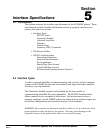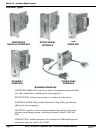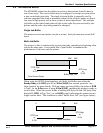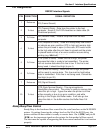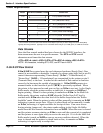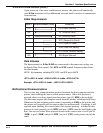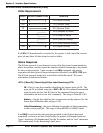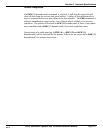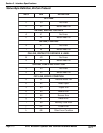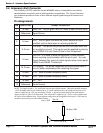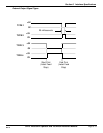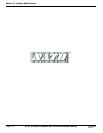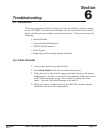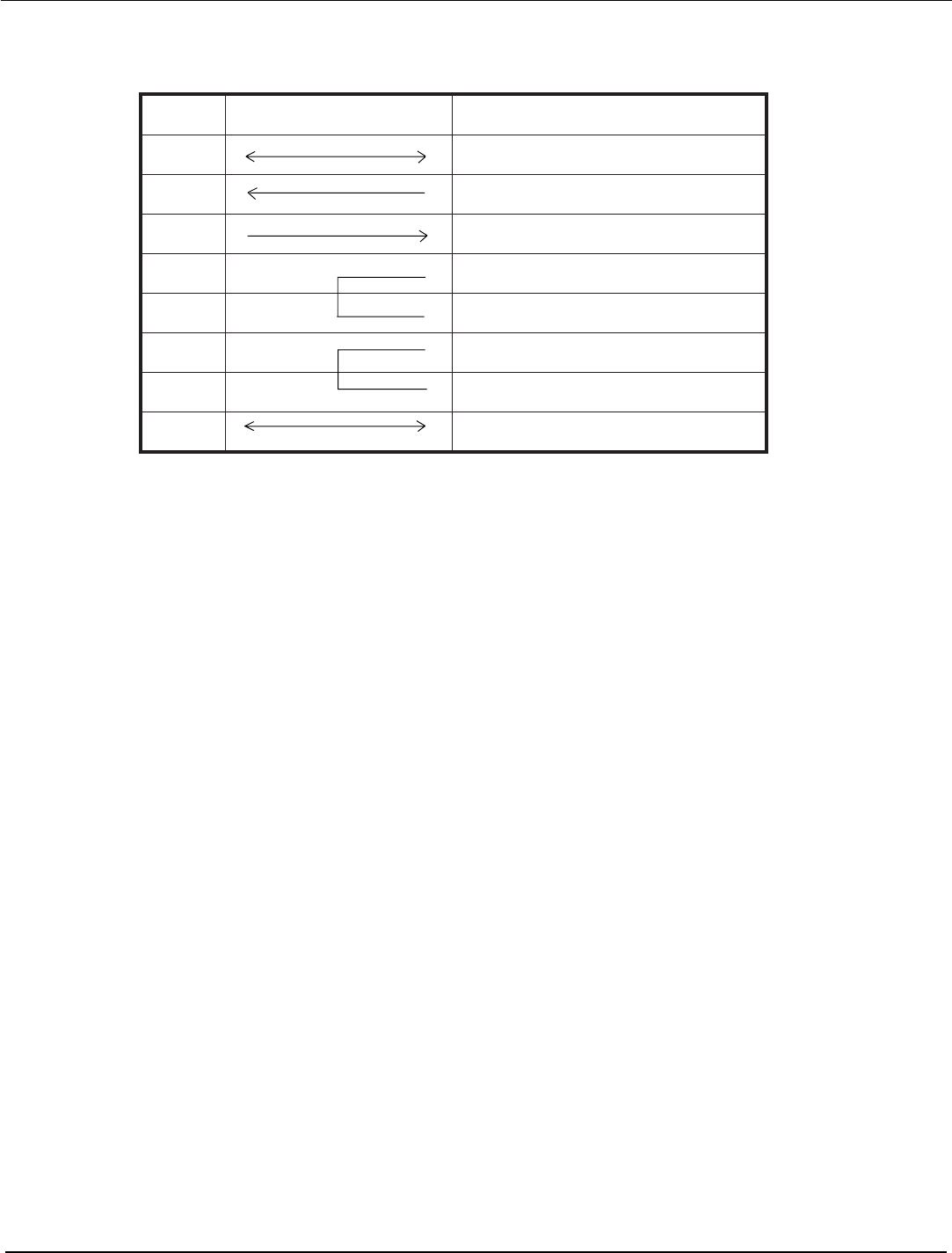
SATO M-5900RV Operator and Technical Reference Manual
Page 5-8
Section 5. Interface Specifications
PN 9001081
Rev. C
Bi-Directional Communications (Cont)
TSOHNOITCENNOCRETNIRETNIRP
GF)dnuorGemarF(GF1
DR)ataDtimsnarT(DT2
DT)ataDevieceR(DR3
)dneSottseuqeR(STR4
)dneSotraelC(STC5
)ydaeRteSataD(RSD6
)ydaeRlanimreTataD(RTD02
GS)dnuorGlangiS(GS7
Cable Requirements
If a CAN (18 hexadecimal) is received by the printer, it will cancel the current
print job and clear all data from the receive buffer.
Status Response
The Bi-Com protocol is an advanced version of bi-directional communications
where the printer can also report the number of labels remaining to be printed
for the current print job. Upon receipt ot an ENQ command, the printer
responds with nine bytes of status information bounded by an STX /ETX pair.
The Bi-Com protocol works only in the Multi Job Buffer mode. The status
information is defined as follows.
<STX>{2 Byte ID}{1 Status Byte}{6 Byte Label Remaining}<ETX>
ID - This is a two byte number identifying the current print job ID. The
print job ID is defined using the <ESC>ID Job ID command transmitted
with the print job (see Job ID Store in the command listing for more
information on how to use this command). The range is from 00 to 99.
Status - A single byte defining the current status of the printer. (See the
Status Byte Definition table on page 5-10).
Label Remaining - Six bytes defining the number of labels remaining
in the current print job. The range is from 000000 to 999999 labels.
If an ENQ is received after the print job specified in the ID bytes has been
completed, or there is no data in the buffer, the printer will respond with two
"space" characters (20 hexadecimal) for the ID number and six "zero" characters
(30 hexadecimal) in the Remaining Labels bytes.




